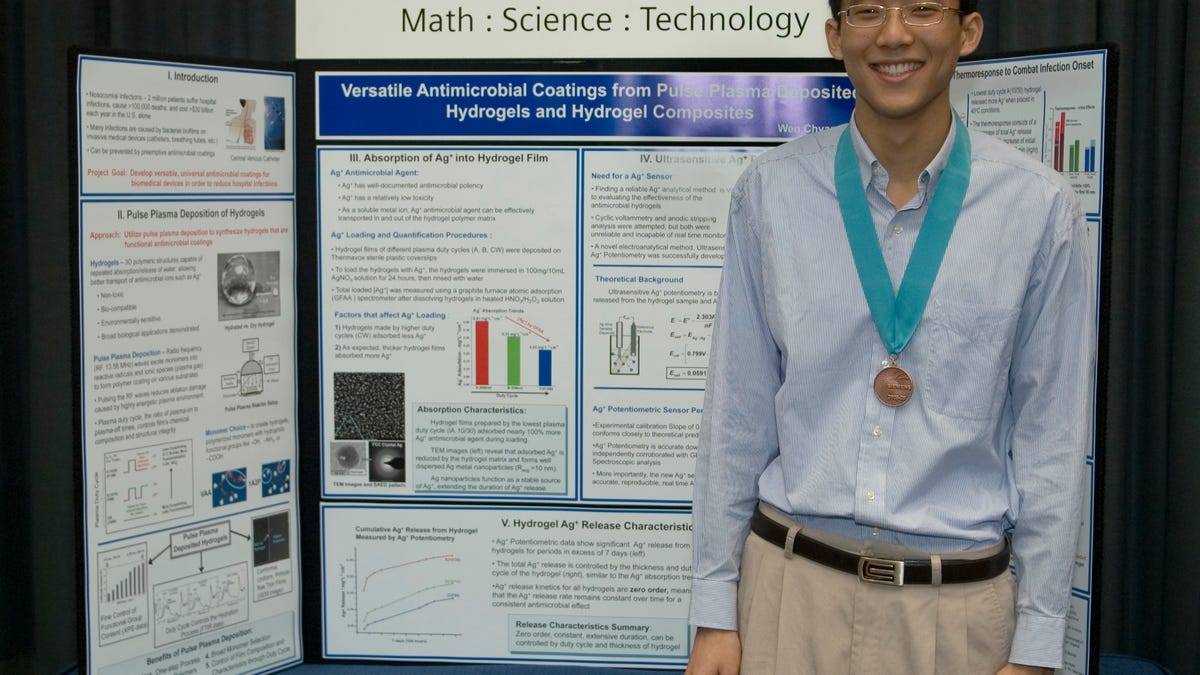Teen scientists vie for $100,000 prize in N.Y.
Twenty finalists in the Siemens Competition in Math, Science, & Technology gather to showcase projects ranging from diabetes treatment to protein drug delivery.

First, 2,151 high school students registered to compete. Then 414 regional and semifinalists were chosen. Today, an elite group of just 20 finalists is gathering in New York for the highly prestigious--not to mention high stakes--Siemens Competition in Math, Science, & Technology.
The grand prize, at $100,000, could actually put one of these kids through about half of college, if they don't already have other scholarship offers flooding their mailboxes.
The 20 student presentations are scheduled for live broadcast on Sunday, December 6, at 1 p.m. EST, while the press conference announcing the winners will be held Monday, December 7, at 9:30 a.m. EST. Tune in here for the Web cast.
Wen Chyan, who won last year's competition as a 17-year-old high school senior at the Texas Academy of Mathematics and Science in Denton, took home the $100,000 top prize for developing a new method to create antimicrobial coatings for stents, catheters, and other medical devices. Such devices are leading culprits in the estimated 2 million annual U.S. hospital-acquired infections that lead to 100,000 deaths.
This year's finalists are presenting research into mostly medical areas as well, from a urine test for the early detection of colorectal cancer, to a novel and biologically compatible material for protein drug delivery.
Ruoyi Jiang, a senior in East Setauket, New York, is one of just six individual finalists (the other 14 are on teams). Jiang, who calls AP Physics his favorite subject, investigated the molecular basis of a prominent mechanism of chemotherapy drug resistance with his mentor, Dr. Carlos Simmerling, at Stony Brook University, where Jiang volunteers in his spare time. According to his research synopsis:
The project uses state-of-the-art computational techniques to develop a molecular understanding of how Taxol functions to kill tumor cells. Mr. Jiang's results allowed him to predict the long range effects of drug binding on the structure of that protein. The technique was validated using Taxol, showing that his computational results are consistent with experimental data. These results suggest that this method may have an important contribution in the development of a new class of pharmaceuticals.
Simmerling tells me Jiang's work is highly interdisciplinary, and that this particular research is called computational biophysics. "When you look at people who win these competitions, they typically end up being internationally known," he says. "But they are just good, creative kids. They don't know all of the stuff they need to know, because they haven't had all the classes, but they're really curious."
As you'll see on the Siemens finalists page, most of the students are bilingual and into such extracurricular activities as playing the violin, tennis, and ballroom dancing, all while juggling research and volunteering. Curious-minded indeed. Tune in this Sunday and Monday and cheer on these young science superstars.

